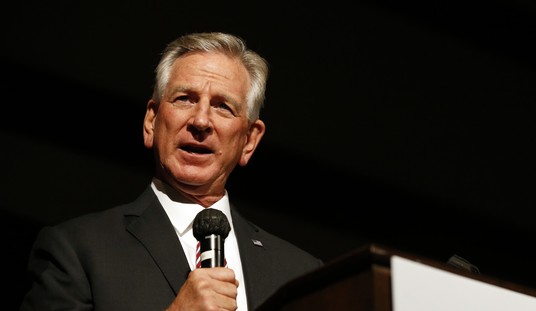Torture is a brutal act that has no place in the toolkits of civilized nations — except, perhaps, when attempting to prevent even more brutal acts by the jihadists who target them. Because of its unique characteristics, the November 2008 terror attack on Mumbai offers a compelling test bed for policies that govern the use of coercive interrogation during times of crisis. At the very least, those advocating an unqualified ban on such methods should be made to defend their position in the context of the Mumbai scenario.
An inspection of the ground assault on India’s financial capital reveals more than a passing resemblance to the much-maligned ticking time bomb (TTB). Popularized by dramas like 24, this hypothetical construct has been a favorite of pundits and policymakers eager to keep the door open for harsh interrogation techniques, especially in the event of a national emergency. If a captured terrorist possesses information that could help thwart an imminent attack, they ask, should not officials be permitted any and all means to extract it?
Philosopher Michael Walzer considered this question three decades ago in a now-classic essay, “Political Action: The Problem of Dirty Hands.” His plotline involves a well-intentioned head of government being “asked to authorize the torture of a captured rebel leader who knows or probably knows the location of a number of bombs hidden in apartment buildings around the city, set to go off within the next twenty-four hours.” Professor Walzer concludes that the protagonist would grudgingly comply with the request, “convinced that he must do so for the sake of people who might otherwise die in the explosions.”
September 11, 2001, and subsequent days of infamy have sparked renewed interest in this thought experiment. Reviewing a book by Professor Alan Dershowitz, who has proposed that torture be regulated via warrants, Judge Richard Posner writes, “If torture is the only means of obtaining the information necessary to prevent the detonation of a nuclear bomb in Times Square, torture should be used.” The Bush administration agreed, indicating that any ban could be ignored in such circumstances. Justice Antonin Scalia and former President Bill Clinton have sympathized with this exception; then-Senator Hillary Clinton did as well, before backtracking during a primary campaign in which both Republicans and Democrats were queried about TTBs.
Critics, however, slam the TTB as unrealistic, pointing to the fact that none of the four experts who testified at a May 6, 2008, House Judiciary Committee hearing could cite a single substantiated case. Opponents of torture thus contend that a TTB is so unlikely that the scenario should carry no weight in serious discussions of interrogation policy. It is “profoundly misleading,” they insist, a “diversion from the national security issues that should be commanding our attention.” Professor Stephen Griffin calls it a “fantasy” meant to “cloud our reason and judgment,” because “the TTB is not a historical episode that we can examine in all its complexity and, as far as I know, nothing like it has ever happened.”
Then along came Mumbai. Last November’s attack not only shares a number of similarities with the TTB scenario, but also tightens the plot by excising undesired assumptions. As such, the Mumbai scenario, wherein a captured terrorist possesses information that could help minimize carnage from an attack already in progress, offers a challenge to those who demand that torture be kept forever off limits.
The assault on Mumbai involved a small cadre of jihadists who used guns and bombs to murder civilians at a train station, a café, a hospital, a Jewish center, a pair of luxury hotels, and other locations throughout the city. Indian security personnel apprehended one of the men, Ajmal Amir Kasab, shortly after he and an accomplice had been videotaped killing commuters inside the Chhatrapati Shivaji Terminus. When he was taken into custody, the long standoff at the Taj Mahal Palace & Tower was just beginning.
The likelihood is high that Kasab held information which, if accessed and applied in a prompt fashion, could have helped police and military forces save lives. Among the logical questions for interrogators to pose:
- How many terrorists are on the ground?
- What are the targets and the distribution of terrorists across those targets?
- What weapons and explosives are the terrorists carrying?
- Have additional weapons or ammo been prepositioned at the attack sites?
- What strategy will the terrorists employ once they control the hotels?
The importance of an accurate headcount is obvious. A complete target list allows officials to deploy resources in an effective manner, removing them from areas of lower risk and concentrating them where they can do the most good. Information about the terrorists’ arsenal ensures that security forces are properly equipped to neutralize the enemy while protecting both themselves and civilians. Finally, insight into the expected endgame — whether the attackers intend to execute the hotel occupants, hold them as hostages, blow up the buildings, etc. — makes all the difference in preparing a response of requisite breadth and urgency.
Depending on the level of compartmentalization maintained by Lashkar-e-Taiba, Kasab may not have had the answers to all five questions. But he almost certainly knew how many terrorists were in action, as they had traveled to the city together on a boat. That data alone is vital. The total number, minus those killed or captured elsewhere, yields the number at the Taj Mahal plus any others on the loose. One need not be a graduate of commando school to suspect that planning a rescue raid might benefit from knowing how many bad guys lie in wait.
As a plotline for use in crafting interrogation policy, the Mumbai scenario improves upon the TTB scenario by eliminating one key weakness: the unexplained back story that authorities somehow learned about the conspiracy in advance, somehow managed to detain one of the operatives before the bomb goes off, and somehow know that he is the right person to question. Professor Alfred W. McCoy has called the probability of this fusion of intelligence “phenomenally slender.” Fair enough. But these suppositions do not affect the Mumbai case, where the attack is under way and a terrorist has been seized while in the process of killing civilians.
More significantly, the Mumbai scenario is no mere intellectual prop. It is, to quote Professor Griffin, “a historical episode that we can examine in all its complexity” — a task far exceeding the scope of this article. In the meantime, its existence should quiet naysayers who mechanically discount the possibility that knowledge acquired from a captured terrorist could translate into human lives that very day. Their arguments have served only to cut off debate about thorny but critically important issues.
So let the examinations commence. Advocates of an across-the-board ban on torture can begin here: explain why physically coercing Kasab — or any terrorist apprehended under similar circumstances — would be unjustified, even if what he holds in his mind could hasten the end of a bloodbath.









Join the conversation as a VIP Member